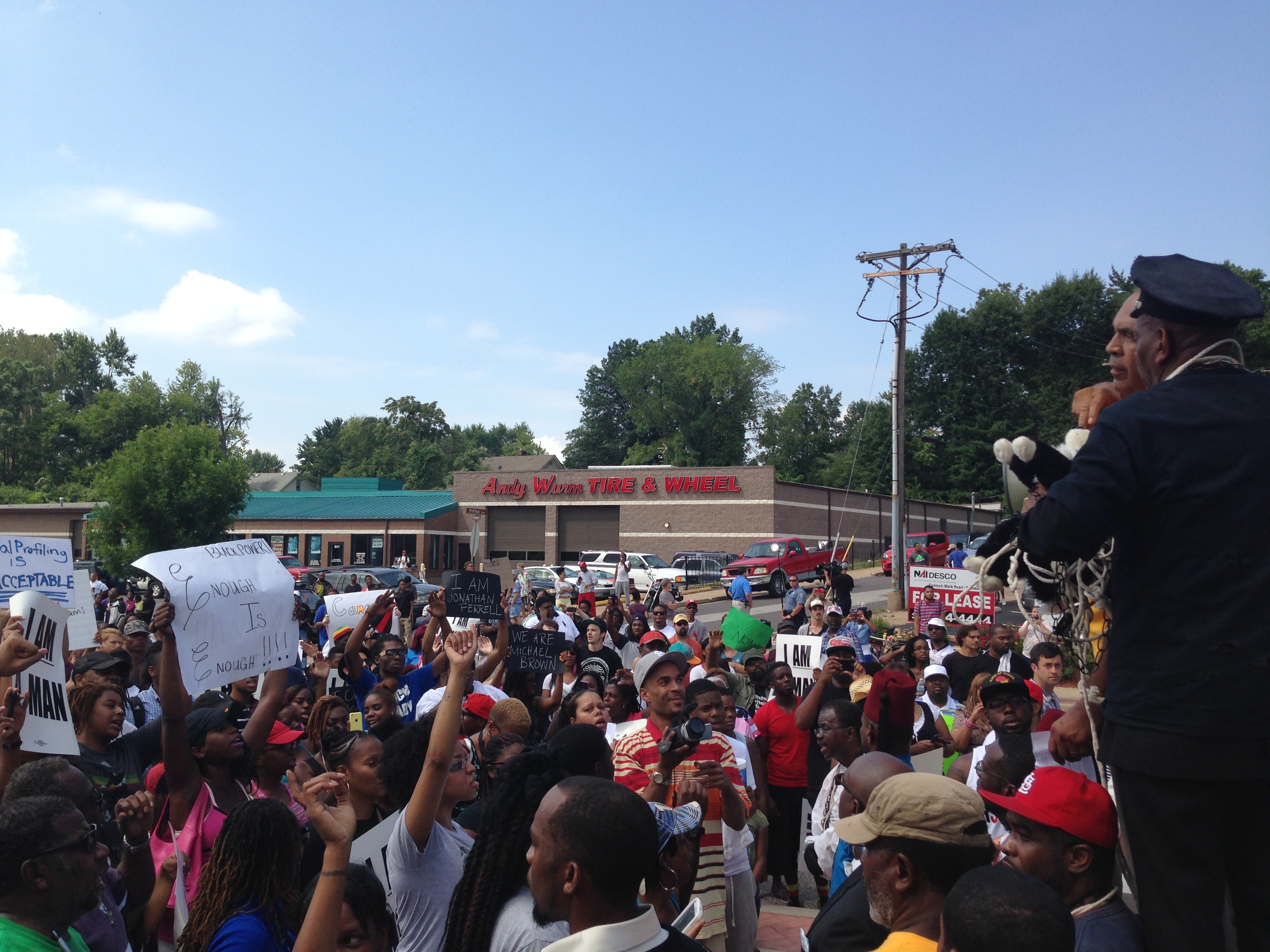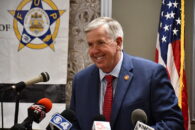Saint Louis, Mo. — Any Missourians hoping Monday would bring perhaps a growing calm in Ferguson will be sorely disappointed. After yet another night of clashes and arguably the most violent encounters with police so far, protestors have finally spurred Gov. Jay Nixon to call in the National Guard to the small north St. Louis County community.
Violence once again erupted last night, though accounts differ as to the cause. While police say a few members of a lawful protest lobbed a Molotov cocktail at their command center, protestors say police were reacting to taunts and noises from the crowd. Police forcibly dispersed crowds early in the evening with tear gas, smoke bombs, and rubber bullets.
Nixon announced late Sunday night that he would be signing an executive order directing the Missouri National Guard to devote manpower and resources to protecting the peace in Ferguson.
Clashes with police have varied from mild to outright violent since unarmed 18-year-old Michael Brown was shot and killed the Saturday before last by a Ferguson police officer. Organized rallies and protests have taken place in Ferguson almost non-stop since the Sunday before last, sometimes resulting in looting and violence in the late evenings.

Nixon’s use of the National Guard was met with a mixed response; with some applauding the move to restore peace and others publicly worrying it could incite further tensions with locals. Nixon clarified that their role would be primarily to help protect the command center in Ferguson, which was the target of a “coordinated assault,” he said.
In his statement on deploying the guard, Nixon noted that there were coordinated attacks against police and civilians taking place, but reminded Missourians that many of the guilty individuals were “from outside the community and state.”
Nixon had previously installed Missouri Highway Patrol Captain Ron Johnson to oversee crowd control of Ferguson, stripping the duty from the St. Louis County Police Department.
That move earned a sharp rebuke from St. Louis County Prosecutor, Bob McCulloch. McCulloch said removing county police would endanger lives and was outside of the Governor’s legal authority.
The decision to wade into the Ferguson quagmire puts Nixon in a tough position. Efforts to bring in state police and remove county officers decked out in riot gear and military-style weaponry were applauded initially and brought almost two full nights of relative calm.
But as Ferguson citizens wait to for more information on Brown’s shooter and possible criminal charges, tensions began to mount. Mayor Francis Slay and Nixon both acknowledged that outside groups are now in the ground in Ferguson creating more violence in the area. Attempts to dampen down police presence appear to have been temporarily abandoned after last night’s events as Missouri’s National Guard spent much of Monday morning setting up camp in Ferguson.
McCulloch hasn’t been free from criticism in the matter. State Senator Jamilah Nasheed has started an online petition asking McCulloch to step down and allow a special prosecutor to handle the Brown case. Nasheed believes McCulloch cannot be impartial.
In an interview with NewsOne, an African American news source, Nasheed says that McCullouch’s own father, who was a police officer, was shot and killed by a black man. Nasheed says McCulloch doesn’t have the trust of the community.
“As long as someone the community fundamentally does not trust is running this investigation, the people aren’t going to have trust in whatever the result is,” Nasheed said. “[McCulloch] is a public servant. If he serves the public, he’ll listen to their wishes to step down.”
Complicating matters early Monday was the preliminary release of the independent autopsy of Brown’s body, performed at the request of his family. The preliminary report, conducted by Michael Baden, former chief medical officer of New York state who performed autopsies on JFK and MLK, suggests that Brown may have been shot in the head from behind, and that the multiple gunshot wounds found on his arm indicate a possible defensive position.
Attorneys for Brown also used the announcement to hammer McCulloch for not releasing the results of the county medical examiner’s own autopsy, which was performed last week. County officials proceeded to release their own preliminary report, which varies only slightly from Baden’s. The county examiner has preliminarily concluded that Brown was shot from the front between 6 and 8 times and that there was marijuana in his system when he died.
Police instituted new rules Monday night, allowing for protests but not allowing for any “stationary” gatherings to take place. With no curfew in Ferguson on Monday night but a new presence of the National Guard, it’ll likely be another tense night in Ferguson.
Collin Reischman was the Managing Editor for The Missouri Times, and a graduate of Webster University with a Bachelor of Arts in Journalism.











